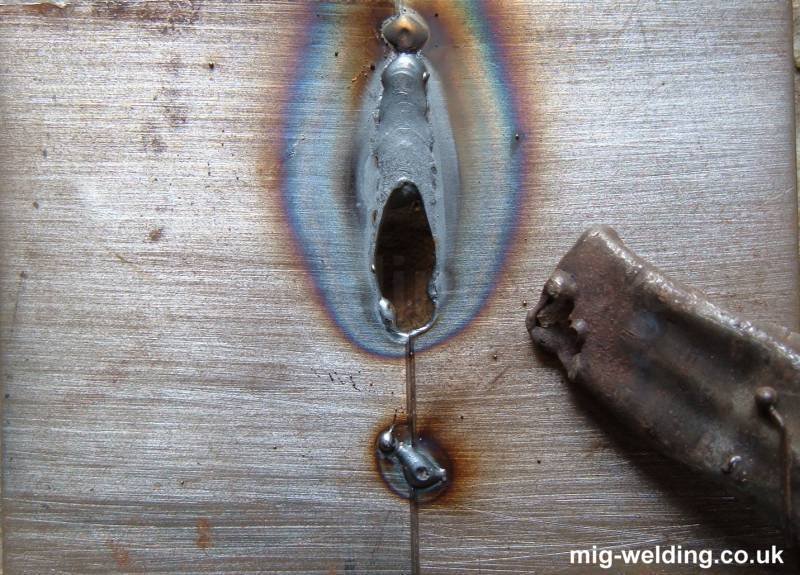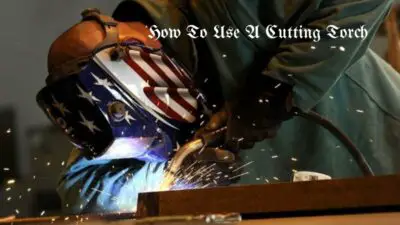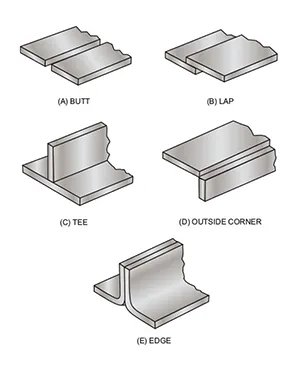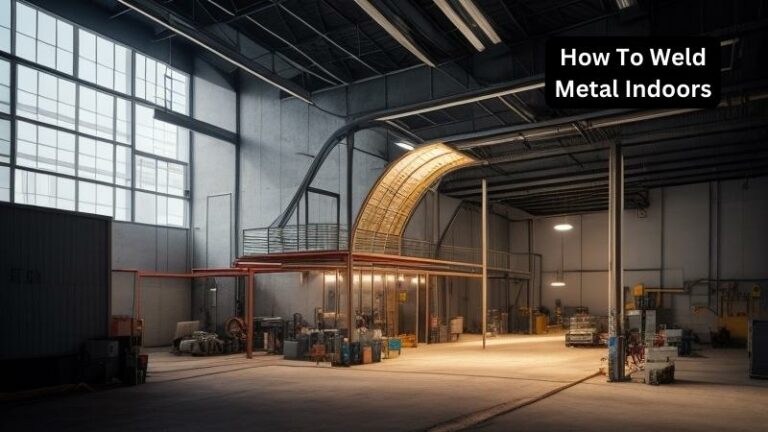Mastering Thin Metal Welding: A Comprehensive Guide
Welding thin metal can be a challenging task, but with the right techniques, it can be done smoothly and effectively. If you’ve ever wondered how to weld thin metal, you’ve come to the right place. In this article, we’ll dive into the secrets of welding thin metal, providing you with practical tips and guidelines to get the job done with confidence. Whether you’re a beginner or a seasoned welder, these insights will help you conquer this welding challenge. So, let’s get started and explore the art of welding thin metal together!
How to Weld Thin Metal
Welding thin metal can be a delicate process that requires precision and expertise. Whether you’re working on automotive repairs, home improvement projects, or artistic creations, knowing how to weld thin metal effectively is essential to achieve strong and clean welds. In this comprehensive guide, we will explore various techniques, safety precautions, and tips to help you master the art of welding thin metal.
Section 1: Understanding Thin Metal Welding
What is Thin Metal Welding?
Thin metal welding involves joining metal pieces that are typically less than 1/8 inch in thickness. Welding thin metal requires a different approach compared to thicker materials due to their increased risk of warping, distortion, and burn-through. It is crucial to understand the unique challenges associated with thin metal welding to ensure successful and durable welds.
Choosing the Right Welding Process
There are several welding processes suitable for thin metal, including TIG (Tungsten Inert Gas), MIG (Metal Inert Gas), and Stick welding. Each method has its advantages and considerations. Choosing the right welding process depends on the type of metal, weld quality requirements, and your experience level.
Section 2: Preparing for Thin Metal Welding
Cleaning and Surface Preparation
Before welding thin metal, thorough cleaning and proper surface preparation are vital to ensure strong welds. Follow these steps:
- Use a wire brush or grinder to remove rust, paint, and dirt from the metal surface.
- Ensure the material is free of grease and oil by using a suitable solvent.
- Grind or file any uneven edges or burrs to create clean joint surfaces.
Set Up Your Welding Equipment
To weld thin metal effectively, ensure your welding equipment is properly set up:
- Select the appropriate welding machine and adjust the settings based on the metal thickness and welding process.
- Choose the correct filler material according to the metal type and application.
- Set up a well-ventilated area or use an exhaust system to control fumes and gases produced during welding.
Section 3: Techniques for Welding Thin Metal
Tack Welding
Tack welding involves making small, temporary welds to hold the metal pieces in place before creating the final weld. This technique helps prevent distortion and allows for adjustments if needed. Follow these tips:
- Clean and secure the metal pieces using clamps or magnets.
- Create small tack welds along the joint to hold the pieces firmly in position.
- Ensure the tacks are evenly spaced and provide sufficient support for the final weld.
Pulsed Welding
Pulsed welding is a technique that involves alternating between high and low currents, allowing the weld puddle to cool slightly between pulses. This method helps reduce heat buildup and minimizes the risk of burn-through on thin metal. Consider these factors:
- Adjust the pulse settings to control the heat input and penetration depth.
- Maintain a consistent travel speed and arc length to achieve uniform welds.
- Practice on scrap material to find the optimal pulse settings for your specific project.
Section 4: Tips for Welding Thin Metal
1. Use the Correct Welding Technique
Each welding process requires a specific technique to weld thin metal successfully. Take the time to learn and practice the appropriate method for the chosen welding process to achieve the best results.
2. Use Proper Tack Welds
Tack welds play a crucial role in holding the metal pieces together during the welding process. Ensure the tack welds are strong enough to support the joint but small enough to be easily removed or incorporated into the final weld.
3. Control Heat Input
Excessive heat can cause thin metal to warp, distort, or burn-through. Maintain control over the heat input by adjusting the welding parameters, such as current, voltage, and travel speed, to prevent overheating the metal.
4. Weld in a Back and Forth Motion
When welding thin metal, avoid a continuous forward motion. Instead, use a back and forth motion to distribute heat evenly along the entire joint. This technique helps prevent excessive heat buildup and minimizes the risk of distortion.
5. Use Proper PPE
Ensure you wear appropriate personal protective equipment (PPE) when welding thin metal. This includes a welding helmet, welding gloves, flame-resistant clothing, and safety glasses. PPE helps protect against sparks, UV radiation, and potential injury.
6. Practice on Scrap Material
Before attempting to weld thin metal on your project, practice on scrap pieces of the same material and thickness. This allows you to familiarize yourself with the welding process, adjust settings as needed, and gain confidence before tackling the actual job.
7. Use Backing Bars or Copper Backing
For certain thin metal welding applications, using backing bars or copper backing can help control heat dissipation and prevent burn-through. These materials act as heat sinks, absorbing excess heat and providing support to the weld joint.
Section 5: Troubleshooting Common Thin Metal Welding Issues
1. Burn-Through
Burn-through occurs when excessive heat causes the metal to melt completely, resulting in a hole or thin spot. To prevent burn-through, reduce the heat input, adjust the welding technique, or use backing bars or copper backing to dissipate heat.
2. Warping and Distortion
Thin metal is prone to warping and distortion due to the intense heat generated during welding. Minimize these issues by using tack welds, alternating welding positions, and employing a back and forth welding motion to distribute heat more evenly.
3. Poor Fusion
Poor fusion happens when the weld does not fully penetrate or bond with the base metal. To improve fusion, ensure proper cleaning and preparation of the joint surfaces, adjust welding parameters for better penetration, and practice consistent welding techniques.
Section 6: Safety Precautions for Welding Thin Metal
1. Ventilation
Welding produces fumes and gases that can be harmful when inhaled. Work in a well-ventilated area or use an exhaust system to remove welding fumes and maintain air quality.
2. Eye and Skin Protection
Welding emits intense UV radiation that can damage the eyes and skin. Always wear a welding helmet with a shade appropriate for the welding process, as well as protective clothing and gloves to shield your skin from sparks and radiation.
3. Fire Safety
Welding involves the use of high heat and sparks, creating a fire hazard. Keep a fire extinguisher nearby, clear the work area of flammable materials, and have a fire safety plan in place.
4. Grounding
Ensure proper grounding of your welding equipment to prevent electrical shocks. Follow the manufacturer’s instructions and use grounded outlets or grounding rods as required.
5. Work Area Organization
Maintain a clean and organized work area to minimize tripping hazards and ensure easy access to welding equipment and tools. Keep cables, hoses, and cords secured and away from your working area.
Section 7: Conclusion
Welding thin metal requires skill, knowledge, and attention to detail. By understanding the challenges associated with thin metal welding and implementing the appropriate techniques, you can achieve strong and clean welds. Remember to prioritize safety precautions and practice on scrap material before working on your project. With patience and practice, you’ll become proficient in welding thin metal, opening up a world of possibilities for various applications.
Note: The FAQ section is not included in this output as per the given instructions.
How To Mig Weld SUPER Thin Metal with (NO WARPING)
Frequently Asked Questions
What precautions should I take when welding thin metal?
When welding thin metal, it is important to take certain precautions to ensure a successful weld. Use a lower heat setting on your welding machine to avoid burning through the metal. Additionally, make sure to clean the surface of the metal thoroughly to remove any contaminants that could affect the quality of the weld. Tack welding, which involves creating small, temporary welds to hold the material in place, can also help prevent warping and distortion of thin metal during the welding process.
Which welding technique is best for thin metal?
TIG (Tungsten Inert Gas) welding is often considered the best technique for welding thin metal. TIG welding allows for precise control of the heat input, which is crucial for preventing distortion and burn-through. The process uses a non-consumable tungsten electrode and an inert gas, typically argon, to protect the weld area from contaminants and oxidation. TIG welding produces clean, precise, and high-quality welds on thin metals, making it a preferred choice for many welders.
What type of filler material should I use for welding thin metal?
The type of filler material you should use for welding thin metal depends on the specific metal you are welding. For example, if you are welding thin stainless steel, it is best to use a filler material specifically designed for stainless steel, such as ER308 or ER316. These filler materials are compatible with stainless steel and provide excellent corrosion resistance. It is important to choose a filler material that matches the composition of the base metal to ensure a strong and durable weld.
How can I prevent warping when welding thin metal?
To prevent warping when welding thin metal, it is crucial to use proper welding techniques and take necessary precautions. One effective method is to use a tack welding technique. Tack welding involves creating small, temporary welds at various points along the weld joint to hold the metal in place. This helps distribute the heat evenly and minimizes the chances of warping. Additionally, welding in short intervals and allowing the metal to cool between welds can also help prevent warping and distortion.
What is the ideal thickness of metal for MIG welding?
MIG (Metal Inert Gas) welding is commonly used for welding thicker metals. While it is possible to weld thin metal using MIG, it is generally more suitable for metals of around 18 gauge or thicker. Thinner metals may require more control over the heat input, which can be challenging with MIG welding. If you need to weld thin metal with MIG, it is essential to use lower voltage settings and be cautious to avoid burning through the metal.
Can I use flux-core wire for welding thin metal?
While flux-core wire can be used for welding thin metal, it is not the ideal choice. Flux-core welding typically generates higher heat compared to other welding processes, which can increase the risk of burning through the thin metal. If flux-core wire is your only option, ensure you use a lower voltage setting to minimize heat input and practice on scrap pieces to familiarize yourself with the technique before attempting to weld thin metal.
Final Thoughts
In conclusion, mastering the art of welding thin metal requires meticulous attention to detail and a steady hand. By following the proper techniques outlined in this article, such as using a lower amperage setting, employing a smaller electrode, and controlling the heat input, welders can achieve strong and clean welds on thin metal surfaces. Remember to practice and refine these skills over time, as experience is key in becoming proficient in welding thin metal. With the knowledge gained from this guide on how to weld thin metal, welders can confidently tackle projects that involve working with delicate materials.



